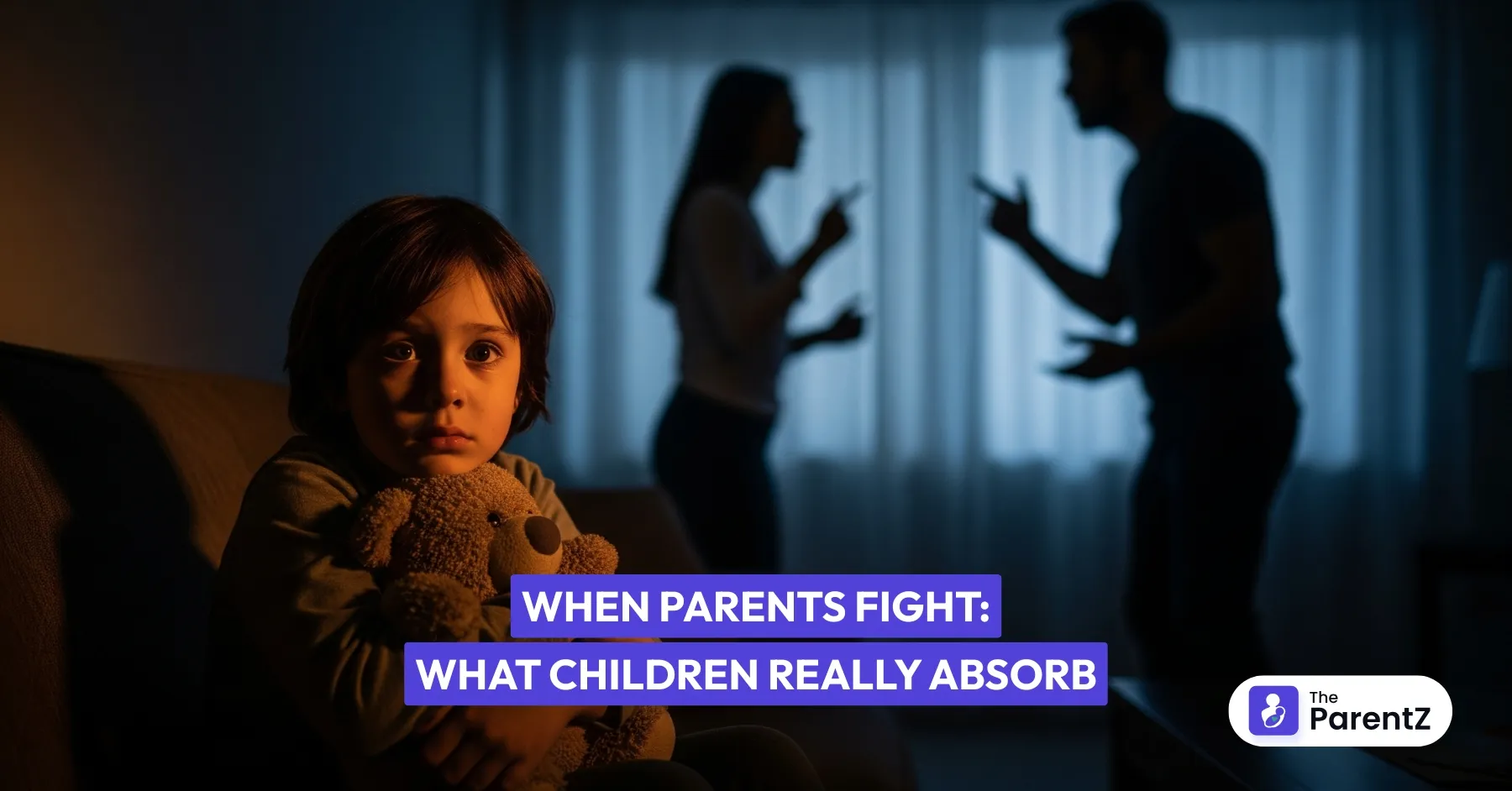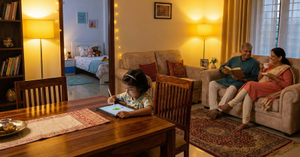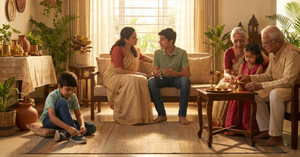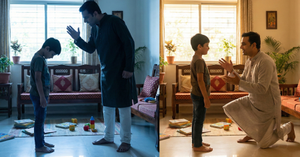When you fight with your partner, you’re not the only two people in that argument. Your child is there too. Maybe not sitting in the same room. Maybe not looking directly at you while it happens. Maybe not hearing every word. But believe me, they notice. They feel it. They absorb it. Children are like sponges; they pick up way more than you think.
As parents, we often tell ourselves, “Oh, they didn’t hear us,” or “They’re too young to understand.” But kids don’t need to hear every word to know something is wrong. They see your body language. They sense the tension in the room. They pick up on the silence. They notice when you’re not looking at each other, not talking, or speaking to each other with that cold sharpness in your voice.
The fight doesn’t end when you and your partner hug and make up. For your kid, it’s still there. It lingers, stays with them, and teaches them lessons about relationships, safety, and love; lessons you probably don’t want them to learn.
What Kids Really Absorb When Parents Fight
They Learn What “Love” Looks Like
Children shape their understanding of love and relationships by looking at you. If what they mostly see is yelling, ignoring, rolling eyes, or sarcastic tones, then to them, that becomes normal. Later in life, they might accept the same kind of relationship, thinking, “This is just how love is.”
They Feel Unsafe
Even if you don’t slam doors or raise your voice, tension itself feels unsafe. Kids crave stability. When they sense that something’s broken between Mom and Dad, they can feel insecure, like their world could fall apart at any second. They might not express it openly, but that knot in their stomach, that hesitation in their laughter, that’s fear.
They Blame Themselves
This one’s heartbreaking. Children often believe that they are the reason you fight. Maybe they think, “If I behaved better, maybe Mom and Dad wouldn’t be upset.” Or “If I hadn’t asked for that toy, maybe they wouldn’t be arguing.” They carry that guilt and you may have no idea.
They Feel They Need To Choose Sides
When conflicts drag on, kids sometimes feel like they’re stuck in the middle. They love both of you. But your cold indifference or pointed comments indirectly make them feel like they have to decide who’s “right” and who’s “wrong.” No child should feel torn like that.
They Learn To Hide Their Feelings
If your child sees you shouting or giving each other the silent treatment, they may think, “Ok, so this is how people handle emotions; they bottle them up until they explode or shut down completely.” Instead of speaking up, they might start hiding their own feelings because they don’t want to add fuel to the fire.
The Silence Affects Them Too
Here’s something many parents overlook. It’s not just about the loud arguments. When you give each other the cold shoulder, walk past each other without talking, or keep conversations clipped and harsh, your child notices. That silence is loud to them. It tells them something is deeply wrong. Sometimes silence is scarier than shouting.
The Part Parents Forget
The hardest truth? You may move on after a fight, but your child doesn’t. You and your partner can kiss and make up, but your child’s heart doesn’t reset that easily. They remember the pit in their stomach, the tension in the air, the sound of anger in your voice. They replay it in their minds. It doesn’t just vanish for them.
Arguments are a part of life. Nobody is perfect. But how you handle them matters tremendously. Think of it like this: every fight is not just a moment between you and your partner; it’s also shaping your child’s memories, personality, and emotional world.
What You Can Do Differently
- Pause before it escalates. Remind yourself that your child is watching and absorbing. That alone can calm you down.
- Disagree respectfully. Yes, you can argue without being cruel, without sarcasm, without shouting, without silence that freezes the house. Show your child that conflict can be healthy.
- Reassure openly. If your child has witnessed tension, talk to them afterward. A simple, “We had an argument, but it’s not your fault, and we love you,” goes a long way.
- Model repair. Don’t just kiss and move on quietly. Let your child see you apologize, and mean it. Teach them that hurt isn’t the end and that it can be worked through.
Conclusion
Every time you let your emotions take the driver’s seat and turn your partner into an enemy in front of your child, you’re not just harming your relationship; you’re planting seeds in your child’s heart. Seeds of fear, confusion, anxiety, and sometimes self-blame.
You can’t protect your child from every disagreement. But you can protect them from unnecessary emotional scars by handling conflict with maturity and self-control.
Your child deserves to grow up in a home where arguments don’t leave invisible bruises, where they see love, respect, and resolution, not constant fights, silences, and cold wars.
Because at the end of the day, they are watching, they are listening, and they are learning.








Be the first one to comment on this story.